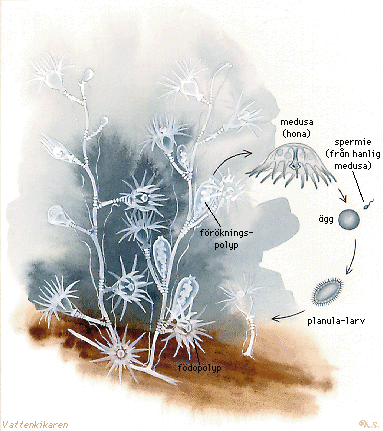|
Notice how the colony
consists of several genetically identical individuals called polyps.
When the planula larvae have attached themselves to the substrate, the
first individual grows out and starts catching food with its tentacles.
The colony grows when new polyps bud off. Polyps that comprise the colony
can share nutrition via the stems, and it is possible for different
polyps to have different functions within the colony. In the picture
above it is possible to see the feeding polyps that catch food with
their poisonousness tentacles and the reproductive polyps that produce
the free-swimming medusae that build either sperms or eggs.
The colony that is depicted in the picture
above is about 3 cm high and the medusae are about 5 mm
wide. The egg, sperm and planula larvae are smaller than 1
mm.
Hydroid colonies can vary greatly in composition. Many
colonies can for example contain defence polyps. The type of life cycle
can vary between different colonies. There are hydroids that lack a
colony building polyp stage, while with other specie the medusae stage
is lacking.
It is the leptomedusae
Obelia geniculata that is depicted above.
|
